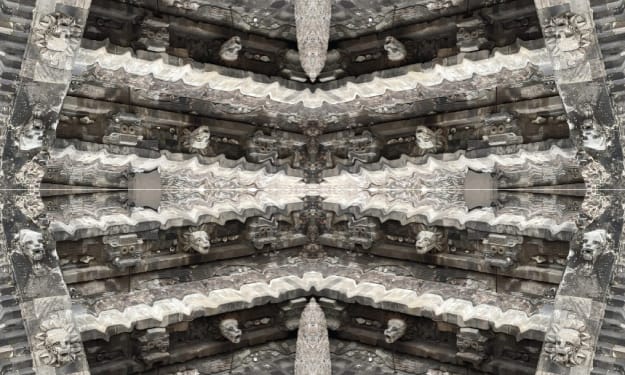Tour Washington DC: The US Capitol
The US Capitol houses the US legislative branch, what other fascinating things are in this building?

The US Capitol Building is the starting of almost every tour of Washington DC. It is the most imposing and recognizable landmark in the city. Its Visitor Center provides a good starting point for those who want to explore the National Mall.
However, a tour of the US Capitol Building itself is an experience not to be missed. Exploring its grand halls is the highlight of any Washington DC government buildings tour. And I am going to share with you some of our favorite aspects of a capital tour. The 1800 Congress has met here in Washington, DC to represent the people and make laws, both the US House of Representatives and the US Senate share the building.
The House is on the Southside of the building and the Senate is on the Northside of the building with the rotunda in the middle, under the Capitol dome. The statue on the top of the Capitol is named Freedom, and visitors see a model of her up-close in the Capitol Visitor Center.
From The Underground: The Visitor Center and The Crypt
When you visit the Capitol, you enter through the Capitol Visitor Center. People from the US and around the world, not only come here for tours but also conferences and meetings with members of Congress on important issues. The Visitor Center’s main lobby is named Emancipation Hall to honor the enslaved people who work to build the Capitol beginning in 1793. Statues of Frederick Douglass, Sojourner Truth, and Sacagewea, reflect the diversity of the individuals who helped shape our country's history.
The original plaster model that was used to create the bronze statue of Freedom is on display in the middle of the staircases of the Visitor Center. It was designed by an American artist named Thomas Crawford who had the model shipped to Washington DC from Italy. The entire statue is 19.5 feet tall.
Freedom is dressed in a classic Greco-Roman style to match the architecture of the building. She also wears a helmet topped with an Eagle plumed crest and carries a sword shield and laurel wreath.
After the Visitor Center, the next room visitors can see is the crypt. The crypt is not the fanciest room in the Capitol, but it has an important job. The arches and the 40 large columns, not only hold up the ceiling, but also the 8.9 million pound dome. The weight of the dome and the rotunda sits on the walls and the arches carry that weight to the columns so that everything is supported. The Star in the crypt marks, the place where the four quadrants of the city come together.
There are a lot of statues in the Capitol. The crypt in particular has one statue from each of the 13 original colonies. There is a statue of Roger Sherman from Connecticut, along with Oliver Ellsworth. Roger Sherman is the author of the great compromise, which is the part of the Constitution that laid out how Congress represents the people.
The Majestic Rotunda
Upstairs is the Rotunda, the room directly under the dome. The Rotunda is the ceremonial center of the Capitol. Over the years this room was used to share our history, unveil new art, honor those who've made significant contributions and say goodbye to national leaders and citizens who have served our country. During the civil war. this room was even used as a hospital for wounded soldiers. The room is decorated with art. Above the visitors, in the eye of the Rotunda, is the Apotheosis of Washington. It is a 4,664-square-feet fresco honoring the first President of the United States. The artist, Constantino Brumidi, had to climb 180 feet up inside the dome to paint it. The word apotheosis means that you've reached the highest height and in the middle of the painting is George Washington surrounded by women 13 of which represent the 13 original colonies. Also in the painting are scenes representing six different themes; war science, marine, commerce, mechanics, and agriculture symbolized by Roman gods and goddesses.
Much of the artwork in the Capitol reflects the history of the country. One of these is the painting by John Trumbull, The Presentation of the Declaration of Independence, which appears in a lot of textbooks and even on the back of the $2 bill. Each piece of art tells a story, the American Revolution, the Civil War, stories of peace, stories of struggle, stories of America.
Statues From Each State
Next door is the Statuary Hall. Before it was a room filled with statues, it functioned as the House of Representatives chamber. From 1807 to 1857, this was one of the rooms where Congress made law. As the country grew in size, Congress added members to the house and the Senate to represent the new States and the greater population of the country. The Capitol building had to grow as well. And today the house of representatives works in a larger chamber down the hall. Today, some of the people who were members of the house in this room are recognized by marking their old desk locations. Eight of them, including Abraham Lincoln and John Quincy Adams, became presidents of the United States. Their desk locations are marked with plaques on the floor.
Congress turned the old hall of the house into national statuary hall in 1864, statues are chosen by the state legislatures. Each state can send statues of two people from its history. Some of the state statues that are in this room today depict people who are members of the House when this room was the House chamber. For example, Kentucky sent a statue of Henry Clay, who was the youngest speaker of the house. But States haven't just sent statues of members of Congress. One of the newer statues in the collection is Chief Standing Bear from Nebraska. He was a leader of the Ponca tribe. When his people were forced to move to Oklahoma to a reservation, he argued successfully for the rights of his people. The state of Ohio sent the statue of inverter Thomas Edison. There is also a statue that is not a state statue, but is a gift from Congress to all. And that is the statue of the iconic civil rights leader, Rosa Parks, a woman who risked her life in the fight against segregation.
Not all state statues are in the Statuary Hall. When the room became Statuary Hall, they thought that all of the state statutes would be placed there, but that was before the US had 50 States. Statues started arriving in the Capitol in 1870, but in the 1930s, the collection outgrew statuary hall and for both aesthetic and structural reasons, Congress authorized the display of statues throughout the building.
Some of the newer state statues are found in the Emancipation Hall like the Montana statue of Jeannette Rankin, the first woman elected to the house of representatives. New Mexico sent the statue of Po'pay, one of the leaders of the Pueblo Indians in the 1600s, while Alabama sent the statue of Helen Keller. Ms. Keller, as an adult, advocated for the rights of people with disabilities as she was both deaf and blind. The statue depicts her as a girl, and the artist captured the moment when she learned how to communicate the word for water.
The Capitol is unlike any other place you will visit. It's the center of the American government, but it's also a witness to history and a symbol of democracy and a place where we tell the stories of what it means to be a citizen of the United States in the building where the people are represented by Congress.
About the Creator
Enjoyed the story? Support the Creator.
Subscribe for free to receive all their stories in your feed. You could also pledge your support or give them a one-off tip, letting them know you appreciate their work.






Comments
There are no comments for this story
Be the first to respond and start the conversation.